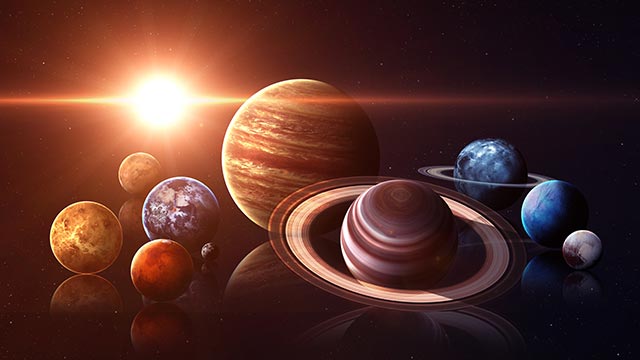Astronomers accidentally stumble upon the footprints of a “massive monster galaxy”
11/20/2020 / By Virgilio Marin

A sky survey in Chile has led to the unexpected discovery of a “massive monster galaxy” previously unknown to scientists. In a paper published in the Astrophysical Journal, researchers led by University of Arizona astronomer Christina Williams said that such massive galaxies had never been seen before, hinting that a new population of galaxies is waiting to be discovered.
Accidental discovery of monster galaxy
Williams, a National Science Foundation postdoctoral fellow at the Steward Observatory in Arizona, was performing new sensitive observations on the sky using the Atacama Large Millimeter Array, a collection of 66 radio telescopes built atop mountains in Chile’s Atacama desert. In the middle of this sky survey, Williams noticed a faint light blob that seemed to be coming out of nowhere.
“It was very mysterious because the light seemed not to be linked to any known galaxy at all,” said Williams.
She tried to catch footprints of this mysterious new galaxy using other wavelengths but failed to catch any signals. The galaxy, she hypothesized, may be really far away and hidden by clouds of dust.
Upon further analysis, Williams and her colleagues estimate that the signal originates from so far away that it took 12.5 billion years to reach Earth. Given the distance, the monster galaxy may provide an unprecedented look into the universe in its infancy.
The universe is estimated to be 13.8 billion years old, and astronomers could “look back in time” by studying signals coming from deep into the universe.
The researchers also found that the signal was likely caused by the warm glow of dust particles, which get heated by stars forming inside the galaxy. The giant clouds of dust may have concealed the light of the stars, rendering the galaxy previously undetectable from Earth.
“We figured out that the galaxy is actually a massive monster galaxy with as many stars as our Milky Way,” said co-author Ivo Labbe of the Swinburne University of Technology in Australia.
According to Labbe, the monster galaxy is brimming with activity, forming new stars at 100 times the rate of the Milky Way.
More monster galaxies in the cosmos?
The discovery offers fresh insights into some of the biggest galaxies in the universe and provides clues to a long-standing question that continues to puzzle astronomers to this day. Previous studies showed that some of the biggest galaxies in the young universe expanded extremely quickly, but how this could happen is not yet properly understood. For one, astronomers have never observed these galaxies while they were forming, giving the impression that they came out of nowhere.
“Our hidden monster galaxy has precisely the right ingredients to be that missing link because they are probably a lot more common,” said Williams.
The discover also raises the question of how many monster galaxies are in the universe. The researchers managed to observe only a very thin slice of the sky. Their finding can either be one of its kind or a sign that monster galaxies are truly everywhere in the cosmos. (Related: A closer look at the voids between galaxies: What’s going on in intergalactic space?)
Fortunately, the researchers may not have to wait for long to solve this puzzle, as the National Aeronautics and Space Administration’s James Webb Space Telescope (JWST) is scheduled to be launched in March next year. The telescope is considered the next premier space observatory for astronomers worldwide and is expected to extend the discoveries of the Hubble Space Telescope.
“JWST will be able to look through the dust veil so we can learn how big these galaxies really are and how fast they are growing to better understand why models fail in explaining them,” said Williams.
Read more articles about amazing findings in outer space at Discovery.news.
Tagged Under: astronomy, breakthrough, cool science, cosmic, discovery, future science, Milky Way, monster galaxy, research, Space, space telescope, Universe
RECENT NEWS & ARTICLES
COPYRIGHT © 2017 REAL SCIENCE NEWS



















